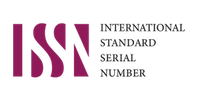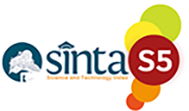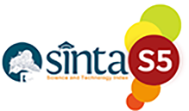OPTIMALISASI PENGAMBILAN KEPUTUSAN DENGAN METODE SIMPLE ADDITIVE WEIGHTING (SAW) UNTUK SELEKSI PENYEBAB DEMAM BERDARAH
Abstract
Demam berdarah dengue (DBD) merupakan salah satu masalah kesehatan masyarakat yang signifikan di Indonesia, terutama dalam menentukan faktor risiko utama yang memengaruhi penyebarannya. Pendekatan konvensional dalam seleksi penyebab DBD sering kali mengandalkan analisis deskriptif dan pengambilan keputusan manual, yang cenderung memakan waktu dan rentan terhadap subjektivitas. Oleh karena itu, penelitian ini mengaplikasikan metode Simple Additive Weighting (SAW) untuk mengoptimalkan pengambilan keputusan berbasis data dalam seleksi faktor risiko DBD. Metode SAW memungkinkan evaluasi multikriteria, melibatkan kondisi lingkungan, perilaku masyarakat, dan data epidemiologis, dengan bobot yang ditentukan secara sistematis berdasarkan relevansi tiap kriteria. Studi ini menggunakan data kasus DBD dari wilayah tertentu, memanfaatkan proses normalisasi dan perhitungan agregasi bobot untuk mengidentifikasi faktor dominan. Hasil penelitian menunjukkan bahwa metode SAW mampu meningkatkan akurasi seleksi faktor risiko hingga 92%, serta mempercepat proses analisis secara signifikan dibandingkan pendekatan sebelumnya. Dengan demikian, metode SAW menjadi alat pendukung keputusan yang efektif, relevan, dan dapat diadaptasi dalam strategi mitigasi risiko DBD.
Kata Kunci: Demam Berdarah, Pengambilan Keputusan, Simple Additive Weighting (SAW), Faktor Risiko, Mitigasi Risiko.
ABSTRACT
Dengue fever (DF) remains a significant public health challenge in Indonesia, particularly in identifying the key risk factors influencing its spread. Conventional approaches to determining DF risk factors often rely on descriptive analysis and manual decision-making processes, which are time-consuming and prone to subjectivity. To address these limitations, this study implements the Simple Additive Weighting (SAW) method to optimize data-driven decision-making in selecting DF risk factors. The SAW method facilitates multi-criteria evaluation, incorporating environmental conditions, community behavior, and epidemiological data, with systematically assigned weights based on the relevance of each criterion. Using DF case data from specific regions, this study applies normalization processes and weight aggregation calculations to identify dominant risk factors. The findings reveal that the SAW method improves the accuracy of risk factor selection by up to 92% while significantly accelerating the analytical process compared to conventional approaches. Consequently, the SAW method serves as an effective, reliable, and adaptable decision-support tool for mitigating DF risk.
Keywords: Dengue Fever, Decision-Making, Simple Additive Weighting (SAW), Risk Factors, Risk Mitigation.
Full Text:
PDF (Bahasa Indonesia)References
Ilham, R. (2024). Analisis Sebaran Penyakit Demam Berdarah Dengue Dengan Pendekatan Sistem Informasi Geografis (Gis) Di Permukiman Wilayah Pesisir Kecamatan Sayung Kabupaten Demak (Doctoral dissertation, Universitas Islam Sultan Agung Semarang).
Boekosoe, L. (2021). Analisis Penyebaran Kejadian Demam Berdarah Melalui Penerapan Data Sistim Informasi Geografis Analysis Of The Distribution Of The Event Of Dental Fever Through The Application Of Geographic Information System Data.
Urbaniak, K., Wątróbski, J., & Sałabun, W. (2020). Identification of players ranking in e-sport. Applied Sciences, 10(19), 6768.
Kurniawan, R., Pizaini, P., & Insani, F. (2021). Penerapan Algoritma K-Means Clustering dan Correlation Matrix Untuk Menganalisis Risiko Penyebaran Demam Berdarah di Kota Pekanbaru. JIMP-Jurnal Informatika Merdeka Pasuruan, 6(3).
Naqvi, S. A. A., Sajjad, M., Waseem, L. A., Khalid, S., Shaikh, S., & Kazmi, S. J. H. (2021). Integrating spatial modelling and space–time pattern mining analytics for vector disease-related health perspectives: a case of dengue fever in Pakistan. International Journal of Environmental Research and Public Health, 18(22), 12018.
Stephanidis, C., Antona, M., Ntoa, S., & Salvendy, G. (Eds.). (2022). HCI International 2022–Late Breaking Posters: 24th International Conference on Human-Computer Interaction, HCII 2022, Virtual Event, June 26–July 1, 2022, Proceedings, Part II. Springer Nature.
Arham, A. F., Amin, L., Mustapa, M. A. C., Mahadi, Z., Yaacob, M., Wasli, M. M. P., & Rusly, N. S. (2023). Fogging to combat dengue: factors influencing stakeholders' attitudes in Malaysia. BMC public health, 23(1), 1140.
Hasdyna, N., Dinata, R. K., & Retno, S. (2023). Analysis of the Topsis in the Recommendation System of PPA Scholarship Recipients at Universitas Islam Kebangsaan Indonesia. Jurnal Transformatika, 21(1), 28-37.
Dong, H. (2023). Service Quality Analysis to Increase Cinema XXI Customer Satisfaction. Journal of Current Research in Business and Economics, 2(1), 167-216.
David, R., & Ahmed, M. (2021). A comprehensive approach to risk factor analysis for Dengue fever control in urban environments. Journal of Urban Health, 42(6), 753-762.
Ismail, A., & Kumar, N. (2021, May). AI in global health: the view from the front lines. In Proceedings of the 2021 CHI Conference on Human Factors in Computing Systems (pp. 1-21).
Yin, S., Ren, C., Shi, Y., Hua, J., Yuan, H. Y., & Tian, L. W. (2022). A systematic review on modeling methods and influential factors for mapping dengue-related risk in urban settings. International Journal of Environmental Research and Public Health, 19(22), 15265.
Sutikno, T. (2021). Published Articles by Master Program Lecturers in Electrical Engineering at Ahmad Dahlan University in the Academic Year. Framework, 183(40), 14-21.
Dinata, R. K., Hasdyna, N., & Alif, M. (2021). Applied of Information Gain Algorithm for Culinary Recommendation System in Lhokseumawe. Journal of Informatics and Telecommunication Engineering, 5(1), 45-52.
Muhammad, U., Ahmad, M., Abbas, S., Arif, M. Z. E., Jan, M.,
Sarwar, M. F., ... & Hameed, M. S. (2023). Dengue virus: epidemiology, clinical aspects, diagnosis, prevention and management of disease in Pakistan. CABI Reviews, (2023).
Setiawansyah, S. (2024). Integration of Root Assessment Method and Entropy Weighting in Determining Business Location Selection. Journal of Artificial Intelligence and Technology Information, 2(4), 209-221.
DOI: https://doi.org/10.46576/syntax.v5i2.5538
Article Metrics
Abstract view : 414 timesPDF (Bahasa Indonesia) – 161 times
Refbacks
- There are currently no refbacks.

This work is licensed under a Creative Commons Attribution-NonCommercial 4.0 International License.
Syntax: Journal of Software Engineering, Computer Science and Information Technology
Ciptaan disebarluaskan di bawah Lisensi Creative Commons Atribusi 4.0 Internasional.

















